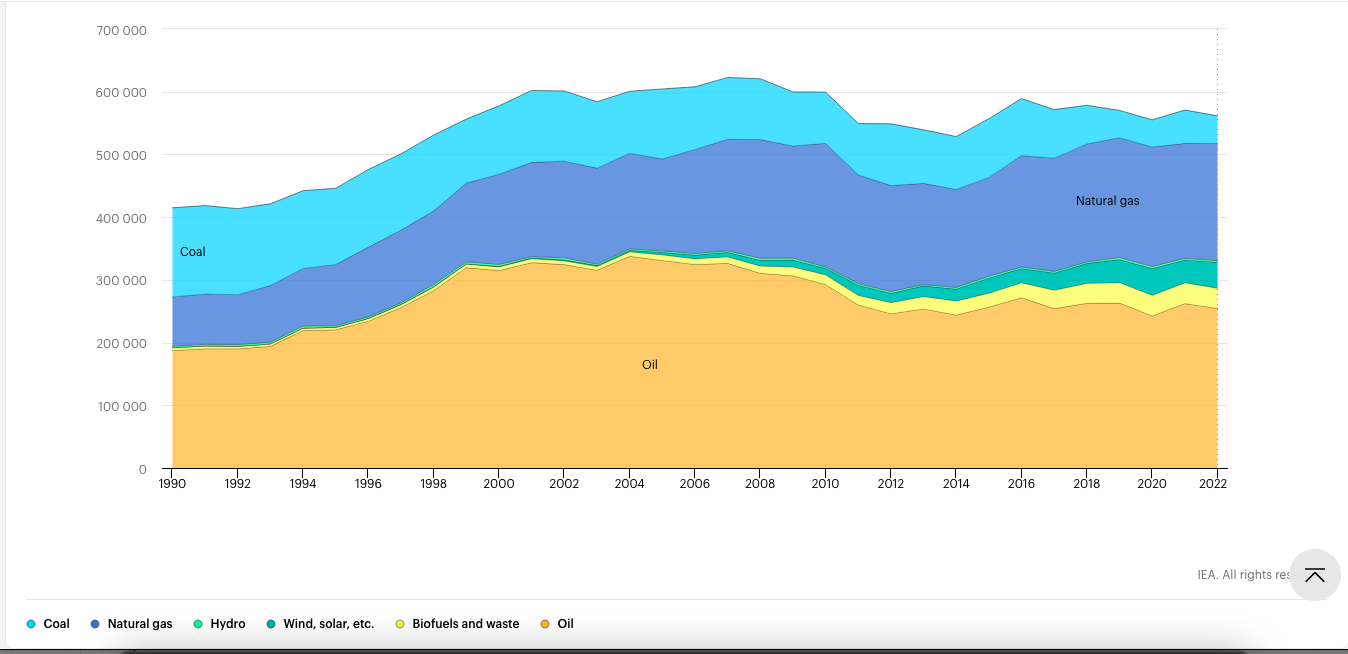IEA, Reaching net zero emissions demands faster innovation, but we’ve already come a long way
A long, detailed Report on the new energy economy and how it is emerging fast, building on a long history of technological progress. The Report covers current global status and developments, as well as data for individual countries. Below is the entry for Ireland, a chart on recent data for sources of energy in Ireland, and parts of a drop-down menu covering status of energy for Data Centres and Data Transmission Networks.
Ireland
Ireland boasted the second highest share of wind in electricity generation among IEA member countries in 2018. It has also improved its energy security through an increase in domestic gas production and a reduction in oil’s share in energy supply.
Ireland has recovered remarkably from the economic crisis which started in 2008 and has the fastest growing economy among all IEA countries since 2014, when GDP exceeded pre-crisis levels. Energy use has increased with GDP growth but still remains under the 2006 peak, partly reflecting the structural shift in the economy toward dominance by the services sector. However, the government’s strategy to establish Ireland as a preferred location for the global digital and data hosting industry, will potentially result in strongly growing electricity demand. This makes fast decarbonisation of the electricity system a necessity.
Despite the progress made, Ireland is not on course to meet its mandatory emissions reduction and renewable energy targets for 2020. Furthermore, there are questions about Ireland’s ability to meet the 2030 emission reduction targets, though the impact of the most recent policies announced by the Government is not yet reflected in the latest emission pathway projection.
Total energy supply (TES) by sources, Ireland 1990 – 2022

Data Centres and Data Transmission Networks
Why are data centres and data transmission networks important?
Demand for digital services is growing rapidly. Since 2010, the number of internet users worldwide has more than doubled, while global internet traffic has expanded 20-fold. The data centres and data transmission networks that underpin digitalisation have led to rising energy use.
What is the role of data centres and data transmission networks in clean energy transitions?
Rapid improvements in energy efficiency have helped limit energy demand growth from data centres and data transmission networks, which each account for about 1-1.5% of global electricity use. Nevertheless, strong government and industry efforts on energy efficiency, renewables procurement and RD&D will be essential to curb energy demand and emissions growth over the next decade.
Where do we need to go?
Since 2010, emissions from data have grown only modestly despite rapidly growing demand for digital services, thanks to energy efficiency improvements, renewable energy purchases by information and communications technology (ICT) companies and broader decarbonisation of electricity grids in many regions. However, to get on track with the Net Zero Scenario, emissions must drop by half by 2030.
See full Report for More information on Tracking Data Centres and Data Transmission Networks;
IEA (2023), Reaching net zero emissions demands faster innovation, but we’ve already come a long way, Paris bit.ly/48vYZq6


No comments yet, add your own below